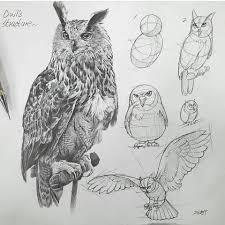Sketch:jgr9lxsmgmg= drawing ideas might seem like an enigmatic term, but it can be understood as a reference to a specific set of sketch:jgr9lxsmgmg= drawing ideas or styles. In the context of artistic exploration, such terms often point to particular methods or creative challenges. Whether it’s a unique approach to sketching or a theme for creative exercises, understanding and leveraging these ideas can broaden your artistic repertoire. By incorporating sketch:jgr9lxsmgmg= drawing ideas, you can explore innovative techniques and push the boundaries of your creativity.
Sketch:jgr9lxsmgmg= drawing ideas Why Drawing Ideas Matter
Having a diverse array of sketch:jgr9lxsmgmg= drawing ideas is essential for every artist, from beginners to advanced practitioners. These ideas provide a foundation for practice and creativity, helping you overcome artist’s block and explore new techniques. By integrating varied drawing concepts into your routine, you can continually challenge yourself and develop your skills. Drawing ideas not only enhance your technical abilities but also inspire you to express your unique vision and perspective through art.
Exploring Different sketch:jgr9lxsmgmg= drawing ideas
Everyday Objects
Drawing everyday objects is an excellent way to hone your skills and observe the world around you. Start with simple items like cups, fruits, or household items. These familiar subjects can help you practice basic techniques and improve your observational skills. For instance, sketching a coffee mug requires attention to its shape, reflections, and shadows, which enhances your ability to capture realism in your drawings.
Why Drawing Everyday Objects is Useful
Practicing with everyday objects is beneficial because it trains your eye to see and replicate fine details. It helps you understand how light interacts with different surfaces and how to represent textures accurately. Additionally, drawing common items provides a low-pressure environment for experimentation and improvement. By mastering these basics, you build a solid foundation for more complex subjects and styles.
Nature and Landscapes
Nature and landscapes offer endless inspiration for sketching. From towering trees to serene lakes, the natural world is full of interesting forms and textures. Start with simple landscapes like rolling hills or a tree in your backyard, and gradually move on to more complex scenes. Capturing the nuances of nature can significantly improve your ability to render depth and detail in your drawings.
Tips for Capturing Natural Beauty in Drawings
To effectively capture nature in your sketches, focus on the elements of light, texture, and composition. Use various techniques like cross-hatching to create texture and shading to depict depth. Pay attention to the way light changes throughout the day and how it affects the colors and shapes of natural objects. This practice not only enhances your technical skills but also deepens your appreciation for the natural world.
sketch:jgr9lxsmgmg= drawing ideas Techniques and Tips
Basic sketch:jgr9lxsmgmg= drawing ideas and Techniques
Mastering fundamental sketching techniques is crucial for building your drawing skills. Start with basic methods such as shading, cross-hatching, and stippling. These techniques help create depth, texture, and dimension in your sketches. Practice drawing simple shapes and gradually move on to more complex subjects. Consistent practice with these techniques will improve your overall sketching abilities.
Sketch:jgr9lxsmgmg= drawing ideas Tools and Materials for Sketching
Selecting the right tools and materials can make a significant difference in your sketching process. Commonly used materials include graphite pencils, charcoal, and various types of paper. Experiment with different hardness of pencils (e.g., H for hard, B for black) to achieve different effects. Additionally, investing in high-quality sketchbooks and erasers can enhance your drawing experience and results.
Advanced Sketching Techniques
As you advance, incorporating more complex techniques can elevate your sketches. Techniques such as perspective drawing and detailed texture rendering require a deeper understanding of spatial relationships and artistic methods. Practice drawing from life and using reference images to refine these skills. Exploring advanced techniques will help you create more dynamic and lifelike sketches.
Incorporating Mixed Media
Mixing different media can add richness and variety to your sketches. Combine traditional materials like pencil and ink with digital tools for a unique approach. Experimenting with mixed media can lead to innovative and visually compelling artwork. For example, adding watercolor washes to pencil sketches can create a striking contrast and depth.
Finding Inspiration for Sketches
Online Resources and Communities
The internet offers a wealth of resources and communities for finding drawing inspiration. Websites like Pinterest and DeviantArt, as well as forums and social media groups, provide access to diverse artistic ideas and challenges. Engage with online communities to share your work, receive feedback, and discover new techniques and trends.
Joining Art Challenges and Contests
Participating in art challenges and contests can be a great way to boost your creativity and connect with other artists. Challenges often provide specific themes or prompts that encourage you to explore new ideas and techniques. They also offer opportunities to showcase your work and gain recognition within the art community.
Drawing Prompts and Challenges
Drawing prompts and daily challenges can help you stay motivated and explore different subjects. Prompts are short, specific ideas that spark creativity and guide your sketching process. For example, a prompt might be “draw your favorite food” or “sketch a character from your favorite book.” Incorporating these prompts into your practice routine can keep your work fresh and engaging.
Developing Your Unique Sketching Style
Experimenting with Different Styles
Exploring various sketching styles is key to developing your unique artistic voice. Try different approaches, such as realism, abstract, or cartooning, to discover what resonates with you. Experimenting with different styles can help you find your niche and refine your technique. It’s important to remain open to new ideas and continually challenge yourself.
Finding Your Personal Artistic Voice
Sketch:jgr9lxsmgmg= drawing ideas Developing a personal artistic style involves combining your influences, techniques, and preferences into a cohesive approach. Reflect on the elements that define your work and how they express your individuality. Embrace your strengths and unique perspectives to create a style that is distinctly your own. Remember that your artistic voice will evolve over time, so remain patient and persistent in your journey.
Conclusion
In this guide, we’ve explored a range of Sketch:jgr9lxsmgmg= drawing ideas and techniques to help you enhance your artistic practice. From everyday objects to advanced techniques, these ideas provide a solid foundation for developing your skills and finding inspiration. Remember that drawing is a continuous learning process, and the more you practice, the more you grow as an artist.
Encouragement to Practice Regularly
Sketch:jgr9lxsmgmg= drawing ideas Consistent practice is essential for improving your sketching abilities. Set aside time each day to draw and experiment with new ideas. Whether you’re working on a detailed landscape or a simple sketch, regular practice will help you refine your skills and develop your unique style. Keep exploring and challenging yourself to stay inspired and motivated.
Read More: Drawing:ktetjzdofvc= eagle







